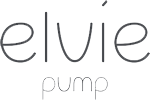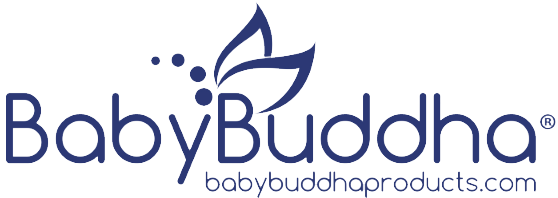Wearable Breast Pump vs Regular Pumps Pros, Cons, and Differences
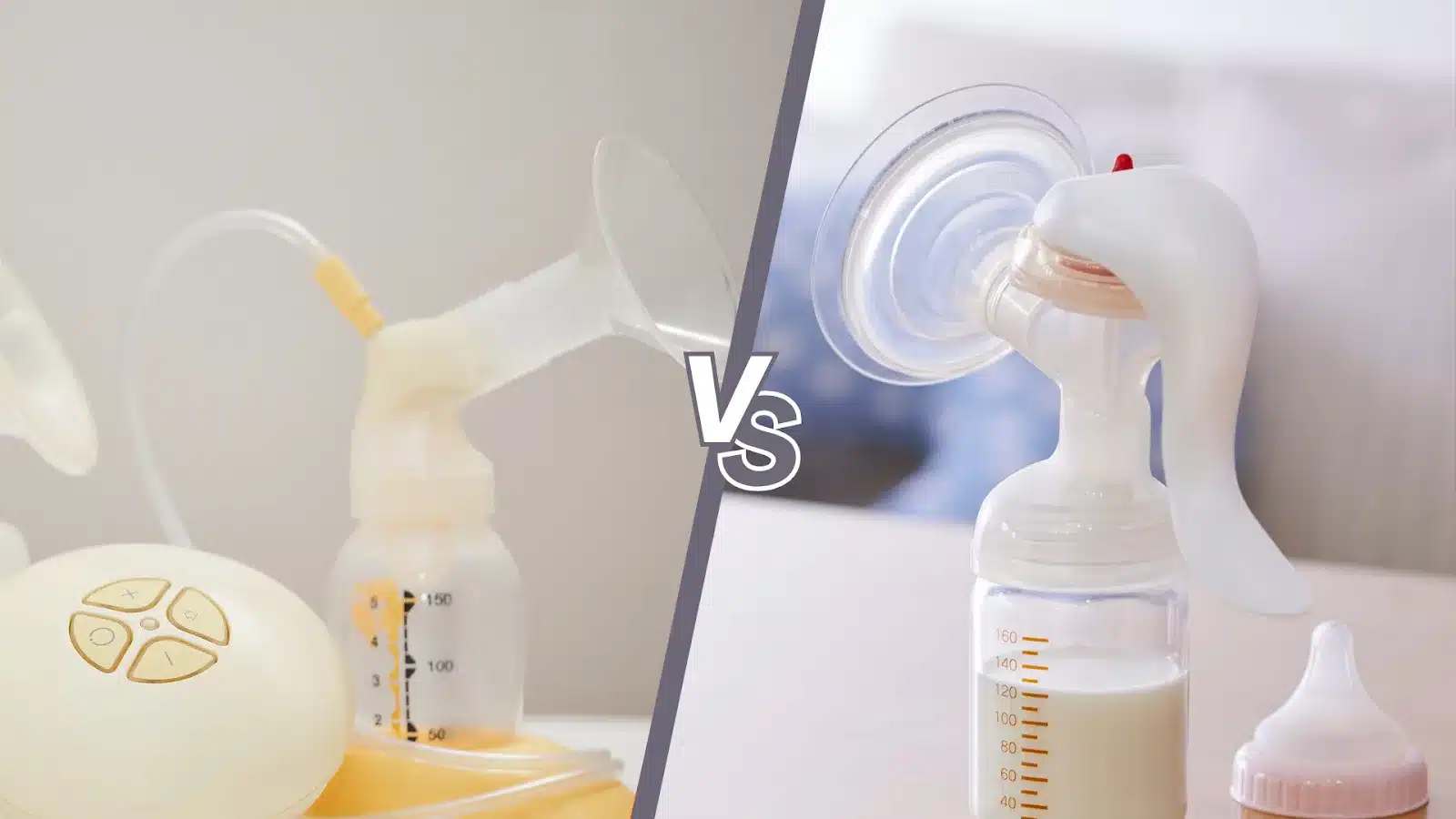
For many nursing moms, breast pumps are more than a convenience; they’re a lifeline. Whether you’re returning to work, managing milk supply, or simply needing a break from direct breastfeeding, pumping gives flexibility while still nourishing your baby with breast milk.
When choosing a pump, you’ll come across two main options: wearable breast pumps and traditional (regular) breast pumps. Each serves the same purpose, extracting milk, but their design, comfort, and usability are quite different.
In this guide, we’ll explore the key differences between a wearable breast pump vs regular one, helping you make an informed, confidence-boosting choice.
Key Takeaways
- Wearable pumps are discreet, hands-free, and great for busy or on-the-go moms.
- Traditional pumps (manual or electric) offer strong suction and tend to be more budget-friendly.
- Your choice depends on what matters most: comfort, routine, budget, portability, or hands-free flexibility.
- Many moms use both: wearable for mobility, traditional for home sessions.
- Insurance may cover your pump, check with Insurance Covered Breast Pumps to explore your options easily.
What Is a Wearable Breast Pump?
A wearable breast pump is a hands-free, all-in-one device that fits discreetly inside your bra and allows you to pump milk while moving around.
When is a wearable pump most helpful?
- When multitasking at work, home, or while caring for other children
- For discreet pumping on the go or during meetings
- If you prefer a cordless, clutter-free pumping experience
- When you want a quieter, more private session in public or shared spaces
What Is a Traditional Breast Pump?
A traditional or regular breast pump includes a motor (usually external), tubing, flanges, and collection bottles. It can be manual or electric and often requires being seated in one place to use. This type is widely used for its powerful suction and reliability.
When is a traditional pump most helpful?
- For frequent or exclusive pumping at home
- When establishing or boosting milk supply in the early postpartum period
- If you want maximum control over suction strength and cycle speed
- When using a hospital-grade or double-electric model for efficiency
Comparing Use: Wearable vs Traditional Breast Pump
The table below will help you quickly compare key differences so you can choose what truly fits your daily rhythm, comfort, and pumping goals.
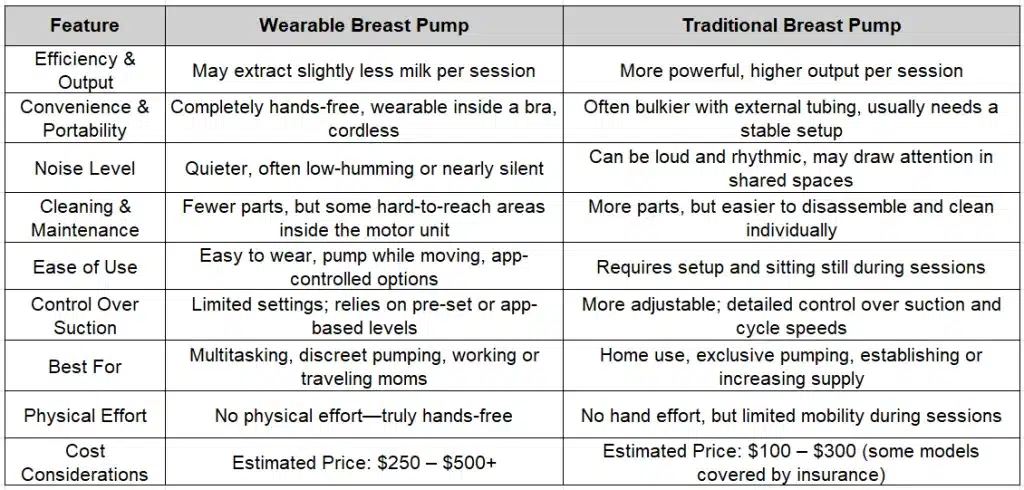
Top Wearable and Traditional Breast Pumps to Explore
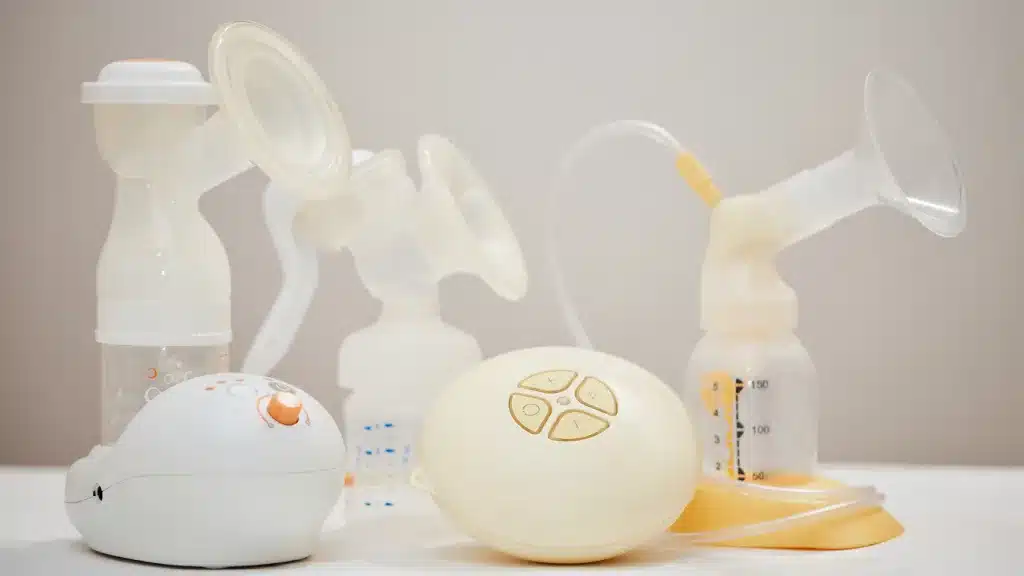
Finding a pump that fits your daily life is just as important as choosing one with the right features. Below, we’ve listed a few of the most trusted wearable and traditional breast pumps, so you can decide based on comfort, lifestyle, and ease of use.
Wearable Breast Pumps
1. Elvie Wearable Breast Pump
A sleek, silent, and completely wireless pump that fits discreetly into your nursing bra.
Key Features:
- Truly hands-free, wearable design
- Silent motor for discreet pumping
- App control for suction level and tracking
- Rechargeable battery and spill-proof containers
How It Helps: Ideal for multitasking moms, especially at work or while caring for older kids. Offers freedom without sacrificing output.
Estimated Price: $255 (single) / $412 (double)
2. Willow 360 Wearable Breast Pump
A high-tech, spill-proof wearable pump with advanced tracking and flexible milk storage options.
Key Features:
- Cord-free with in-bra design
- Spill-proof even while lying down
- Connects to app for real-time milk volume
- Option to pump into reusable containers or disposable bags
How It Helps: Great for active moms who want smart features and the ability to pump anywhere, even on the move.
Estimated Price: $375 (double)
3. Momcozy S12 Pro Wearable Pump
A budget-friendly wearable option with strong suction and easy-to-read controls.
Key Features:
- Adjustable suction with LED screen
- 3 modes and 9 intensity levels
- Leak-proof design and soft silicone parts
- Rechargeable battery with long run time
How It Helps: Offers the flexibility of a wearable pump without the high price. A great option for first-time wearable users.
Estimated Price: $75 (single) / $135 (double)
Traditional Electric Breast Pumps
1. Spectra S1 Plus Electric Breast Pump
A hospital-strength, rechargeable pump loved for its power and quiet operation.
Key Features:
- Double electric pump with closed system
- Adjustable suction and cycle speed
- Night light and digital timer
- Rechargeable battery for portability
How It Helps: Ideal for exclusive pumpers or moms boosting supply. Comfortable and efficient with a soft rhythmic suction.
Estimated Price: $216
2. Medela Pump In Style with MaxFlow
A well-known, insurance-covered pump built for reliable daily use.
Key Features:
- Hospital-grade performance
- Closed system for hygiene
- Lightweight motor with carry bag
- Compatible with most Medela accessories
How It Helps: Offers consistent suction and portability. Great for daily pumping at work or home.
Estimated Price: $170 (often covered by insurance)
3. Lansinoh Smartpump 2.0 Double Electric Pump
A compact, quiet pump with smart app integration and a strong reputation for comfort.
Key Features:
- Bluetooth-enabled for session tracking
- Customizable suction and speed
- Hygienic closed system
- Lightweight, portable design
How It Helps: Gives you personalized pumping sessions with helpful tracking tools. A solid choice for working moms.
Estimated Price: $125
How to Choose Between Wearable and Traditional Breast Pumps

Your feeding journey is uniquely yours, and the right breast pump should fit into your life, not the other way around.
Here’s a thoughtful breakdown to help you choose what truly works:
How often will you be pumping?
- Pumping throughout the day or building a stash for returning to work? A traditional electric pump is typically more powerful and consistent.
- Want freedom to move while pumping? A wearable pump lets you multitask hands-free, even while chasing a toddler or folding laundry.
Do you need to be mobile and discreet?
- If you’re out and about or want to pump during work calls, a wearable pump offers ultimate discretion and freedom.
- If you mostly pump at home or prefer a seated, private routine, a traditional pump gives strong suction without worrying about visibility.
What’s your noise tolerance?
- Wearable pumps are quieter than many traditional models, making them ideal for pumping in shared spaces or during meetings.
- Some traditional pumps can be louder but are often more efficient at expressing milk quickly.
What matters more, power or convenience?
- Traditional pumps often offer stronger suction, better for emptying fully and efficiently.
- Wearables trade a bit of suction strength for convenience, but many moms find the trade-off worth it for freedom and ease.
How much effort do you want to spend on setup and cleaning?
- Wearable pumps tend to have simpler parts, but each model varies, look for easy-to-clean designs if that matters to you.
- Traditional pumps can have more tubing and accessories, so be prepared for slightly more cleaning time.
Tried and Tested: What Moms Say About Their Breast Pumps
Below are authentic insights from moms, echoed across trusted sources. These real voices bring practical wisdom and emotional reassurance to the decision-making process, helping you feel a little less alone and a lot more supported as you navigate your feeding journey.
Wearable Breast Pumps
“I’m 15wpp and have only used wearables since I was discharged with my baby. Using a wearable has had no discernable negative impact on my output, but it has had a TREMENDOUS impact on how often I was able to pump per day (ppd).”
Traditional Breast Pumps
“I have both and love both. Regular pumps get better output and are typically more comfortable. Wearable pumps are more convenient, but don’t empty your breasts as well.”
How to Get Your Wearable or Traditional Breast Pump Through Insurance
Choosing between a wearable or traditional breast pump is already a lot to think through, figuring out insurance coverage shouldn’t be another hurdle.
With Insurance Covered Breast Pumps, you can quickly check if pumps like the Momcozy wearable or Spectra traditional models are available through your insurance. Just answer a few easy questions and get matched with options that fit your lifestyle and coverage.
Final Words
Finding the right breast pump often feels like balancing comfort, time, and your baby’s needs, all while navigating everything else life brings your way.
Whether you discover confidence in the quiet focus of a traditional pump or ease through your day with a hands-free wearable, what matters most is that it supports you.
Permit yourself to choose flexibility over perfection. Every small decision you make, every session, every pause, is part of your care, your connection, and your incredible journey through motherhood.
FAQs
-
Are wearable breast pumps as effective as traditional ones?
Yes, many wearable pumps offer comparable suction strength and milk output to traditional electric pumps. However, output can vary depending on fit, suction settings, and personal comfort.
-
Can I use a wearable pump while doing other tasks?
Absolutely. That’s one of the biggest benefits. Wearable pumps are designed to fit inside your bra so you can pump hands-free, ideal for multitasking or staying active.
-
Are traditional breast pumps more affordable?
In general, yes. Manual and some electric traditional pumps tend to be more budget-friendly. That said, many insurance plans cover both types, so cost doesn’t have to limit your options.
-
Which is better for working moms, wearable or traditional?
Working moms often love the convenience of wearables for discreet pumping at their desks or during meetings. Traditional pumps, especially double-electric ones, are ideal if you’re pumping on a schedule and have a private space.
-
Do wearable pumps make noise?
Most wearable pumps are quieter than traditional ones, but not completely silent. You may still hear a soft motor sound, especially in very quiet environments.
-
Are wearable pumps harder to clean?
Some wearable models have more small parts, which can take a bit longer to clean than a manual pump. Look for models with dishwasher-safe parts or fewer pieces for easier care.
-
Is it okay to switch between wearable and traditional pumps?
Yes, many moms use both! For example, you might use a wearable while on the move and a traditional pump at home for stronger suction sessions.
-
Will my insurance cover a wearable breast pump?
Coverage varies. Platforms like Insurance Covered Breast Pumps can help you check your eligibility and compare wearable and traditional options covered by your plan.







